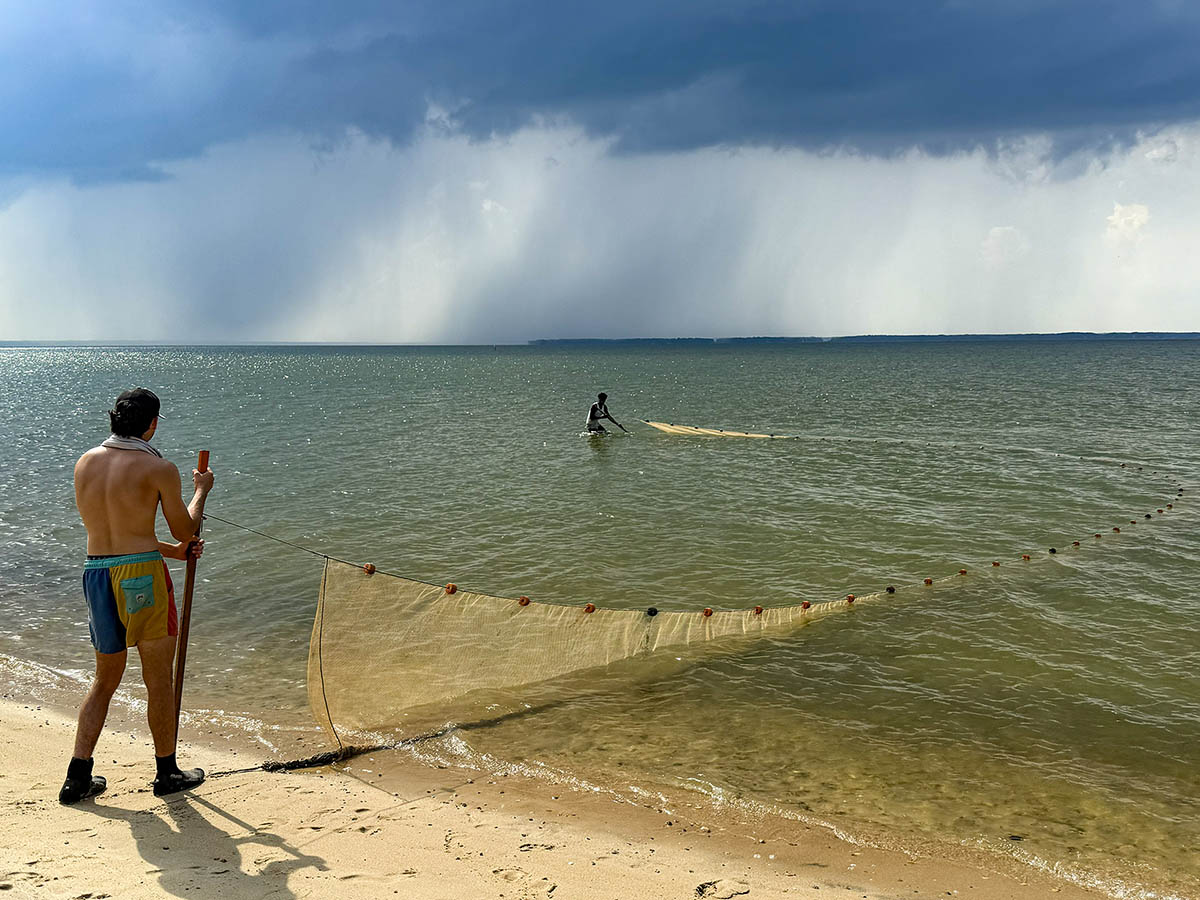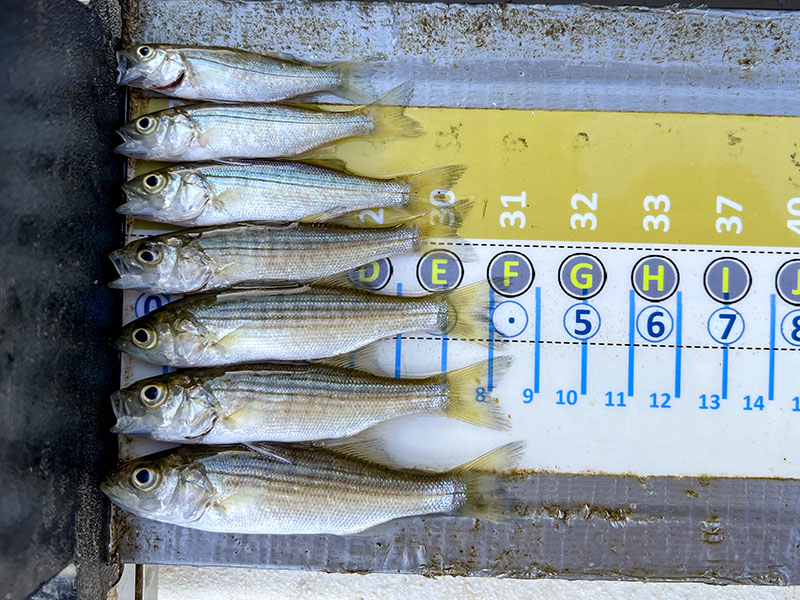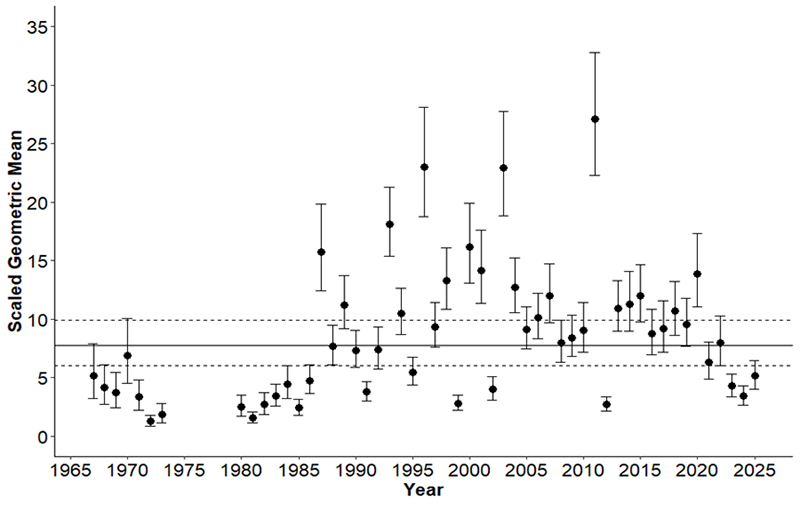An average year for juvenile striped bass in Virginia waters in 2025
 Preliminary results from an ongoing long-term survey conducted by researchers at William & Mary’s Batten School & VIMS suggest that an average year class of young-of-year striped bass was produced in the Virginia tributaries of the Chesapeake Bay in 2025. The 2025 year class, representing fish hatched this spring, will reach fishable sizes in three to four years.
Preliminary results from an ongoing long-term survey conducted by researchers at William & Mary’s Batten School & VIMS suggest that an average year class of young-of-year striped bass was produced in the Virginia tributaries of the Chesapeake Bay in 2025. The 2025 year class, representing fish hatched this spring, will reach fishable sizes in three to four years.
The Batten School & VIMS Juvenile Striped Bass Seine Survey recorded a mean value of 5.12 fish per seine haul in the Virginia portion of the Chesapeake Bay. The 2025 value is similar to the historic average of 7.77 fish per seine haul and represents an improvement over the previous two years of below-average recruitment in Virginia tributaries.
Striped bass are an important top predator in the Chesapeake Bay ecosystem and a valuable resource for commercial and recreational anglers. Mary Fabrizio, a professor at the Batten School of Coastal & Marine Sciences & VIMS, directs the Juvenile Striped Bass Seine Survey and notes that the economic and ecological values of striped bass lend significant interest to the year-to-year status of their population.
"By estimating the relative number of young-of-year striped bass, our survey provides an important measure of annual and long-term trends in the Bay's striped bass population," said Fabrizio.
 The survey team samples fish from 18 index sites in the Rappahannock, York and James River systems. Scientists sample each site five times from mid-June to early September, deploying a 100-foot seine net from the shore. Captured fish are counted, measured and returned alive to the river. At this time of year, young striped bass usually measure between 1.5 and 4 inches. In 2025, scientists in Virginia measured 1,004 juvenile striped bass at index sites.
The survey team samples fish from 18 index sites in the Rappahannock, York and James River systems. Scientists sample each site five times from mid-June to early September, deploying a 100-foot seine net from the shore. Captured fish are counted, measured and returned alive to the river. At this time of year, young striped bass usually measure between 1.5 and 4 inches. In 2025, scientists in Virginia measured 1,004 juvenile striped bass at index sites.
VIMS began conducting the Juvenile Striped Bass Seine Survey for the Virginia Marine Resources Commission and to support coastwide stock assessments for striped bass in 1967. The survey is now the second-longest continuous striped bass index in the U.S., supporting decision making for this commercially and recreationally important species.
The striped bass population in the Chesapeake Bay has rebounded from historic lows in the late 1970s and early 1980s, after fishing bans were enacted in Delaware, Maryland and Virginia in the mid- to late-1980s. Since then, the population increased to the point that striped bass in the Bay and elsewhere along the Atlantic Coast were considered recovered. Years of heavy fishing followed, after which scientists determined that the striped bass population was overfished, and that fishing-related mortality exceeded sustainable levels.
According to the Atlantic States Marine Fisheries Commission’s (ASMFC) 2024 Atlantic Striped Bass Stock Assessment Update Report, the stock remains overfished but is no longer experiencing overfishing. Since 2022, multiple measures – including size limits on the recreational fishery, bag limits, gear restrictions and commercial quota reductions – have been implemented to reduce fishing mortality and rebuild the striped bass stock by 2029.
The Maryland Department of Natural Resources (DNR) conducts a similar survey within Maryland’s portion of the Chesapeake Bay. In 2025, Maryland DNR recorded a below-average year class. More information about the Maryland DNR seine survey is available on their website.
For more information about current striped bass management and regulations, visit the Atlantic States Marine Fisheries Commission website.


